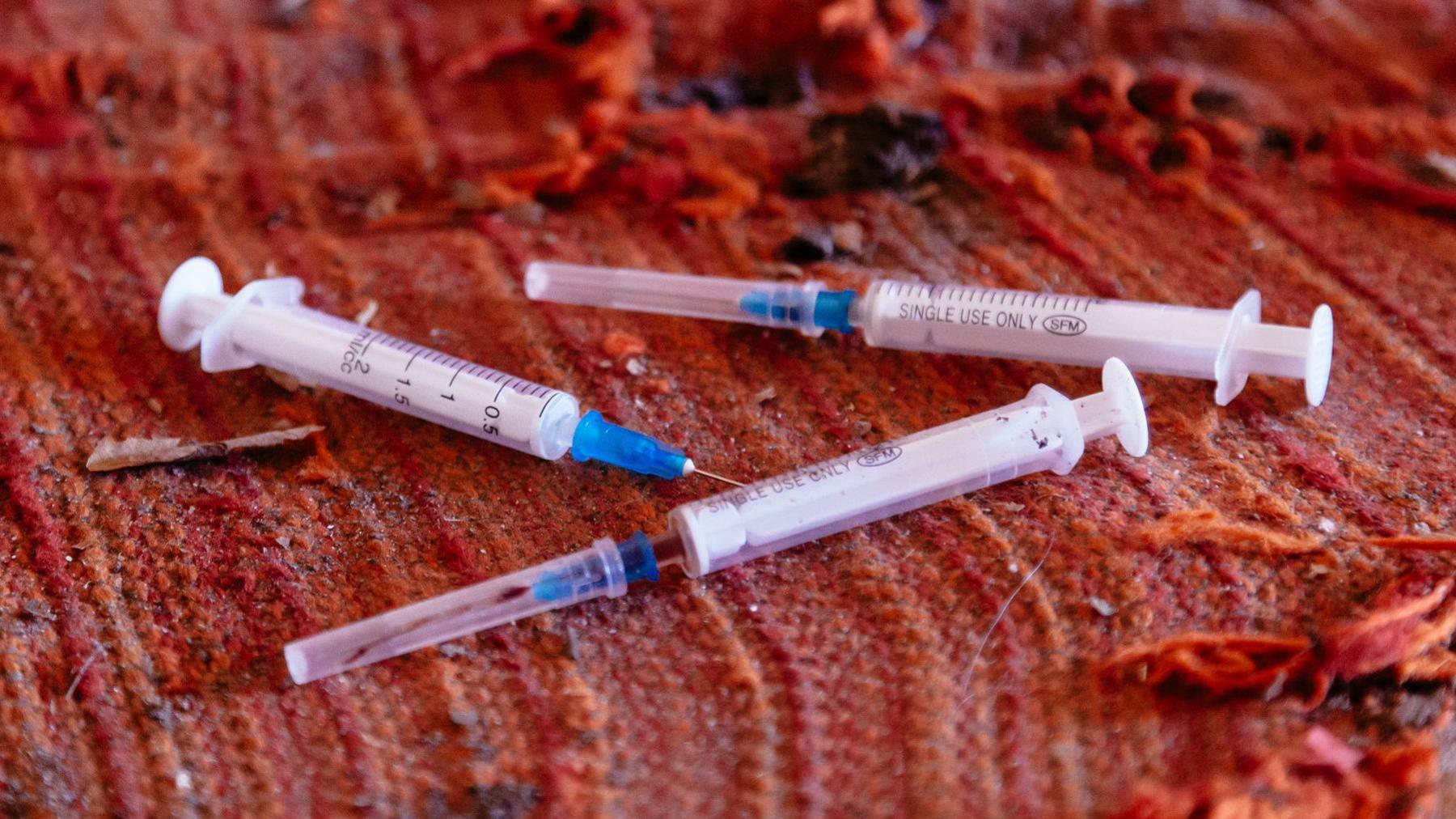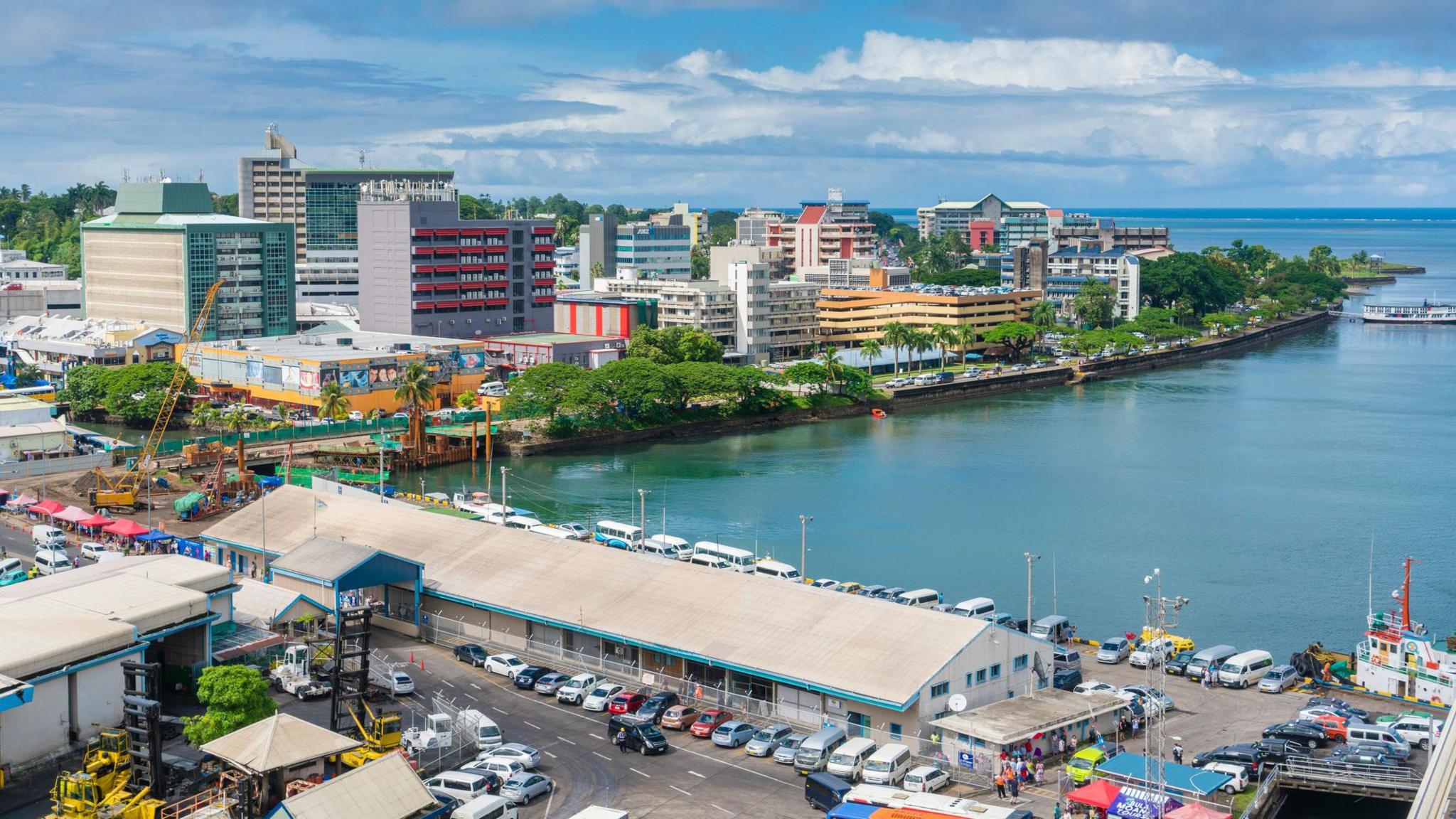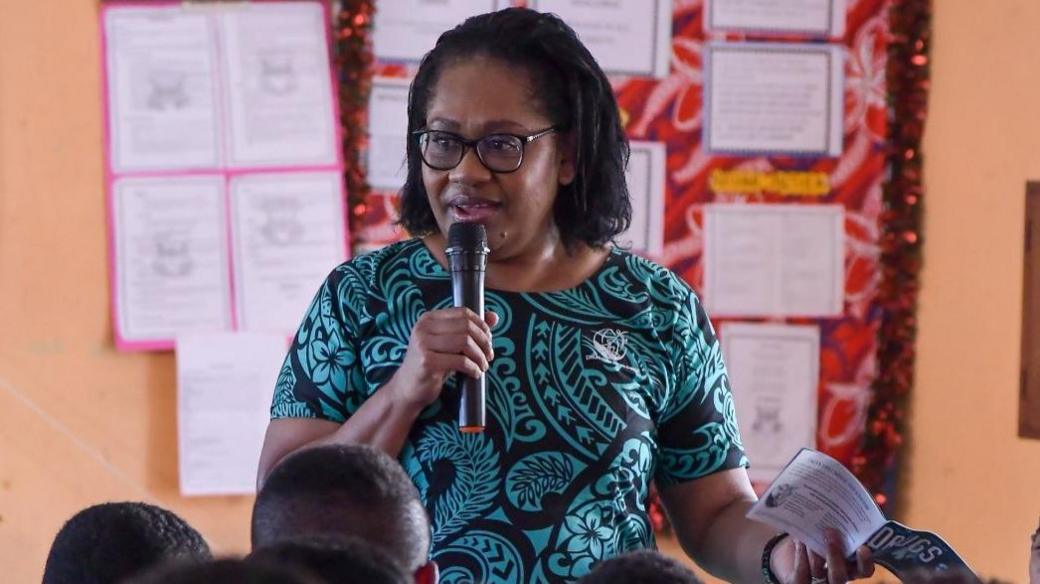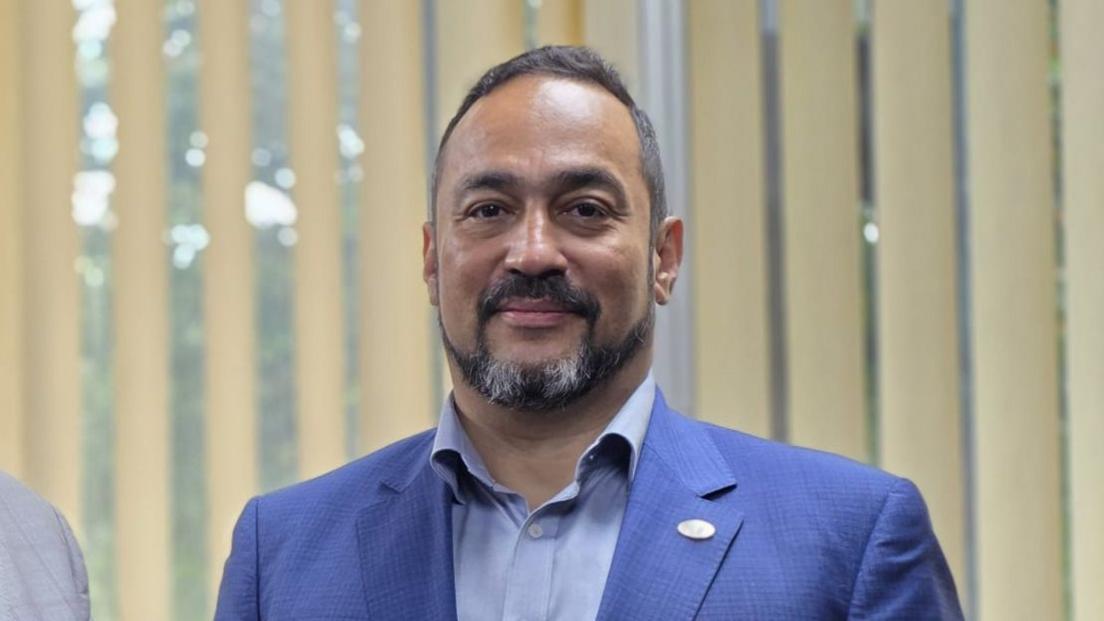'They're not just sharing needles, they're sharing blood': How HIV cases soared in Fiji

Intravenous drug use is fuelling Fiji's HIV epidemic
- Published
Ten: that's the age of the youngest person with HIV that Sesenieli Naitala has ever met.
When she first started Fiji's Survivor Advocacy Network in 2013, that young boy was yet to be born. Now he is one of thousands of Fijians to have contracted the bloodborne virus in recent years – many of them aged 19 or younger, and many of them through intravenous drug use.
"More young people are using drugs," Ms Naitala, whose organisation provides support to sex workers and drug users in the Fijian capital Suva, tells the BBC. "He (the boy) was one of those young people that were sharing needles on the street during Covid."
Over the past five years, Fiji – a tiny South Pacific nation with a population of less than a million – has become the locus of one of the world's fastest growing HIV epidemics.
In 2014, the country had fewer than 500 people living with HIV. By 2024 that number had soared to approximately 5,900 – an elevenfold leap.
That same year, Fiji recorded 1,583 new cases – a thirteenfold increase on its usual five-year average. Of those, 41 were aged 15 or younger, compared to just 11 in 2023.

Fiji's assistant health minister has called the HIV epidemic a "national crisis"
Such figures prompted the country's minister for health and medical services to declare an HIV outbreak in January. Last week, assistant health minister Penioni Ravunawa warned Fiji may record more than 3,000 new HIV cases by the end of 2025.
"This is a national crisis," he said. "And it is not slowing down."
The BBC spoke to multiple experts, advocates and frontline workers about the reasons for such a meteoric rise in case numbers. Several pointed out that, as awareness around HIV spreads and stigma diminishes, more people have been coming forward and getting tested.
At the same time though, they also noted that countless more remain invisible to the official figures – and that the true scale of the issue is likely much bigger than even the record-breaking numbers suggest.
'Sharing the blood'
Underpinning Fiji's HIV epidemic is a spiralling trend of drug use, unsafe sex, needle sharing and "bluetoothing".
Otherwise known as "hotspotting", this latter term refers to a practice where an intravenous drug user withdraws their blood after a hit and injects it into a second person – who may then do the same for a third, and so on.
Kalesi Volatabu, executive director for the NGO Drug Free Fiji, has seen it happen firsthand. Last May, she was on one of her regular early morning walks through the Fijian capital of Suva, offering support and education to drug users on the streets, when she turned a corner and saw a group of seven or eight people huddling together.
"I saw the needle with the blood – it was right there in front of me," she recalls. "This young woman, she'd already had the shot and she's taking out the blood – and then you've got other girls, other adults, already lining up to be hit with this thing.
"It's not just needles they're sharing – they're sharing the blood."
Bluetoothing has also been reported in South Africa and Lesotho, two countries with some of the world's highest rates of HIV. In Fiji, the practice became popular within the past few years, according to both Ms Volatabu and Ms Naitala.

Kalesi Volatabu has spent more than a decade working at the frontline of drug awareness and advocacy in Fiji
One reason for its appeal, they explain, is a cheaper high: multiple people can chip in for a single hit and share it among themselves. Another is the convenience of only needing one syringe.
These can be difficult to come by in Fiji, where pharmacies, under police pressure, often demand prescriptions for syringes, and there is a lack of needle-syringe programmes.
Although there is growing acceptance and approval for the rollout of such programmes – which provide clean injecting equipment to drug users in an attempt to reduce the transmission of blood-borne infections like HIV – implementation in the highly religious and conservative country has proven challenging.
Ms Volatabu says there is a "drastic shortage" of needle-syringe sites, which is fuelling dangerous practices like needle-sharing and bluetoothing and putting the onus on NGOs to distribute syringes as well as condoms.
In August 2024, Fiji's Ministry of Health and Medical Services (MOH) recognised bluetoothing as one of the drivers for the country's rise in HIV cases. Another was chemsex, where people use drugs - often methamphetamine - before and during sexual encounters.
In Fiji, unlike most other countries around the world, crystal meth is predominantly consumed via intravenous injection.
MOH also found that of the 1,093 new cases recorded in the first nine months of 2024, 223 – about 20% – were from intravenous drug use.
Kids on meth
Fiji has become a major Pacific trafficking hub for crystal meth over the past 15 years. A large part of this is due to the country's geographic location between East Asia and the Americas – some of the world's biggest manufacturers of the drug - and Australia and New Zealand – the world's highest-paying markets.
During that same period, meth has spilled into and spread throughout local communities, developing into a crisis that, like HIV, was recently declared a "national emergency".
And according to those on the frontlines, the age of users is trending downwards.
"We see more and more of these young people," says Ms Volatabu. "They are getting younger and younger."
Fiji's most recent national HIV statistics cite injectable drug use as the most common known mode of transmission, accounting for 48% of cases. Sexual transmission accounted for 47% of cases, while mother-to-child transmission during pregnancy and childbirth was cited as the cause of most paediatric cases.
Everyone the BBC spoke to agreed that lack of education is a central factor in the epidemic. Ms Volatabu and Ms Naitala are both working to change that – and Ms Naitala says that as a greater awareness around the dangers of HIV spreads throughout the community, "bluetoothing" has, in her experience, fallen out of favour.
More people are getting tested and seeking treatment for HIV, leading to more robust data around the scale of the crisis.
But there is still a worry that the official case numbers are merely the tip of the iceberg – and a fear of what may lie beneath the surface.
The avalanche
José Sousa-Santos, head of the Pacific Regional Security Hub at New Zealand's University of Canterbury, says "a perfect storm is brewing".
"The concern is across all levels of society and government in regards to Fiji's HIV crisis – not just what's happening at the moment, but where it's going to be in three years' time and the lack of Fiji's resources," he tells the BBC. "The support systems - the nursing, the ability to distribute or to access the drugs for treatment of HIV - just aren't there.
"That's what terrifies us, the people that work in the region: there is no way that Fiji can deal with this."

José Sousa-Santos has been ringing the alarm bell on Fiji's HIV epidemic for years
Following its declaration of an outbreak in January, the Fijian government has sought to improve its HIV surveillance and enhance its ability to address the likely underreporting of cases.
The Global Alert and Response Network, which was called upon to provide that support, stated in a recent report that "addressing these pressing issues through a well-coordinated national response is crucial in reversing the trajectory of the HIV epidemic in Fiji".
That report also noted that staffing shortages, communication issues, challenges with lab equipment and stockouts of HIV rapid tests and medicines were impacting screening, diagnosis and treatment.
Data collection is slow, difficult and error-prone, it added – hampering efforts to understand the extent of Fiji's HIV epidemic and the efficacy of the outbreak response.
That leaves many experts, authorities and everyday Fijians in the dark. And Mr Sousa-Santos is predicting an "avalanche" of cases still to come.
"What we're seeing at the moment is the beginning of the avalanche, but you can't stop it, because the infections are already happening now, or they've already happened – we're just not going to be able to see them and people aren't going to look to get tested for another two to three years," he says.
"There's nothing that we can do at the moment to stop the number of infections that have already happened over the past year, and that are happening now. That's what's really terrifying."